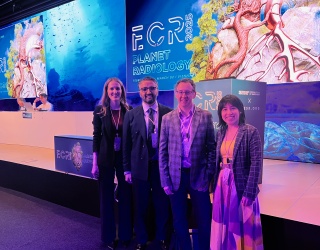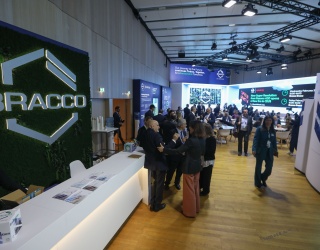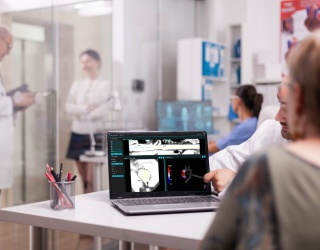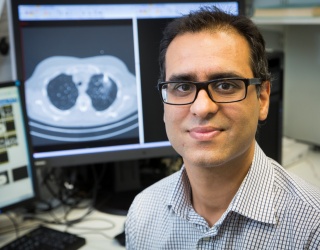At the beginning of the opening session of the ECR Congress, a palpable sense of anticipation fills the air. This year, the focus is not only on medical innovations but also on a much greater responsibility: sustainability in radiology.
Under the motto Planet Radiology, the congress addresses the challenges of climate change and the impact that imaging has on the environment and resources. In Vienna, a city with a deeply rooted scientific tradition, radiologists, scientists, and industry representatives gather to discuss new pathways – and to take a collective look into the future.
From the ALARA Principle to Ecological Responsibility

The opening session traditionally marks the official and festive start of the congress. This year, the program is accompanied by performances from acrobats, a drummer, a singer, and a vocal performer. Their contributions lend the event a celebratory yet thought-provoking atmosphere, emphasizing the dual nature of the evening: acknowledging radiology’s progress while facing the pressing need for change.
The host for this year’s session, Professor Andrea Grace Rockall, Clinical Chair of Radiology at Imperial College London, sets the tone for the evening. With compelling words, she bridges the history of radiology with its current challenges. “We have learned to minimize radiation exposure – can we not apply the same principle to our environmental impact?” she asks the audience.
She recalls the ALARA principle (As Low As Reasonably Achievable), which governs radiation use, and translates it into the need to reduce radiology’s ecological footprint. Her speech is less a scientific treatise and more a call to action. Rockall invokes the medical principle of “Do no harm”, concluding that actively engaging in efforts towards a more sustainable radiology is the only logical consequence.

Access, Equity, and Cooperation
Thinking ecologically also means thinking socially – thus, the discussion extends beyond merely reducing radiology’s environmental footprint. Rafael Grossi, Director General of the International Atomic Energy Agency (IAEA), highlights that radiation medicine remains inaccessible in many parts of the world. While wealthier countries focus on optimization and sustainability, others lack even basic imaging capabilities. “We must leave no one behind,” he urges. In collaboration with the ESR, the IAEA advocates for expanding medical imaging procedures in low-income countries.
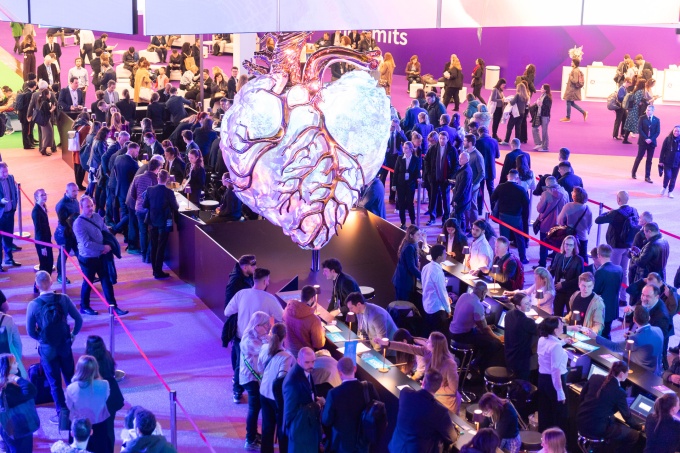
This perspective serves as an important reminder: while developed nations work on minimizing waste, energy consumption, and redundant procedures, millions of people still lack access to life-saving radiological diagnostics. Imaging is not only a cornerstone of modern medicine but also a crucial factor in equitable healthcare. Ensuring its accessibility is just as vital as making it sustainable.Emma Baines, Deputy of Mission for the British government, builds on this theme. She emphasizes the need for international cooperation and highlights initiatives promoting circular economy practices in medical technology. Her message: sustainability is not a national but a global concern.
Concrete Steps Toward a Green Future
Despite a few technical glitches that prevented the display of some elaborately produced videos and graphics and put the teleprompter out of service, the speakers persevered. They navigated between solemn seriousness and visionary optimism, presenting already implemented projects, including initiatives to reduce energy consumption in imaging, intelligent scan data storage, and avoiding unnecessary examinations.
As the evening draws to a close, one key message remains: radiology has repeatedly proven its ability to adapt and drive innovation throughout its history. The field has undergone tremendous transformations, from the early X-ray machines of Wilhelm Conrad Röntgen to the highly sophisticated MRI and CT scanners of today. It has evolved in response to medical needs, patient safety concerns, and technological breakthroughs. Now, it must rise to the challenge of environmental responsibility.



